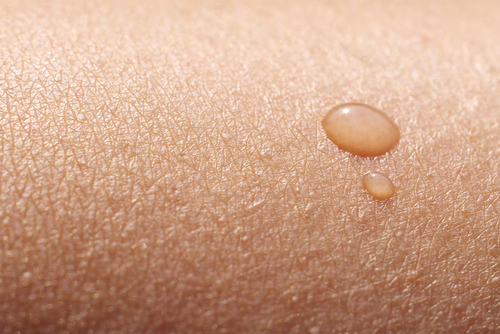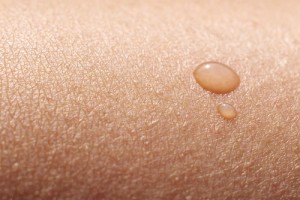Stimulation Used in Classic Sweat Test For Cystic Fibrosis Studied By Researchers
Written by |

 A new study entitled “Pulsed direct and constant direct currents in the pilocarpine iontophoresis sweat chloride test,” recently published in the journal BMC Pulmonary Medicine, compared the production and volume of sweat, side effects caused by pulsed direct current, and constant direct current, and sought to determin the optimal stimulation time for sweat collection for the diagnosis of Cystic Fibrosis (CF).
A new study entitled “Pulsed direct and constant direct currents in the pilocarpine iontophoresis sweat chloride test,” recently published in the journal BMC Pulmonary Medicine, compared the production and volume of sweat, side effects caused by pulsed direct current, and constant direct current, and sought to determin the optimal stimulation time for sweat collection for the diagnosis of Cystic Fibrosis (CF).
In Cystic Fibrosis, there is an increase in the levels of sodium and choride in sweat. In the sweat gland ducts, chloride ions (Cl-) are reabsorbed by the CFTR (cystic fibrosis transmembrane regulator). In healthy subjects, the normal concentration of sweat chloride levels is less than 30 mmol/L, while CF patients show in the distal ducts of sweat gland, absence or defect of CFTR protein, and reduction of Cl- reabsorption with sweat Cl- levels above 60 mmol/L.
A method called the classic sweat test (CST) is known to be a “gold standard” diagnosis test for CF. CST involves stimulation, collection and eclectrolytes measurement. However, CST tests in Brazil have been found difficult to implement and to cause side effects including stress, redness and skin irritation.
The constant direct current (CDC) is commonly used to induce the sweat through iontophoresis, with studies showing that this method is effective in delivering substances through the skin by pulsed direct current (PDC), without causing side effects of CDC.
[adrotate group=”1″]
The team of researchers from Brazil, lead by Clara Gomez from State University of Campinas, compared the production and volume of sweat, and side effects caused by a method called pulsed direct current (PDC) and constant direct current (CDC). Furthermore, the researchers aimed to determine the optimal stimulation time (ST) for the sweat collection, and to verify the PDC as CF diagnosis option.
In a prospective study, three with experimental cross-sectional interventions were explored. From the 48 subjects enrolled in these experiments, the researchers did not find distinctions between frequency and current sweat weight. Results indicated that sweat production was higher at 10 minutes of stimulation and that sweat collection improved at 30 minutes. Data analysis also revealed that skin impedance was not influenced by ST and sweat collection. Additionally, current frequency was inversely associated with the skin impedance. Results also revealed that PDC was a better option than CDC in one of the experiments.
The team of researchers concluded that the CST test with CDC, and PDC with CD was effective in sweat stimulation and collection. Moreover, this study indicated that the optimal stimulation time and sweat collection were 10 minutes and 30 minutes.






